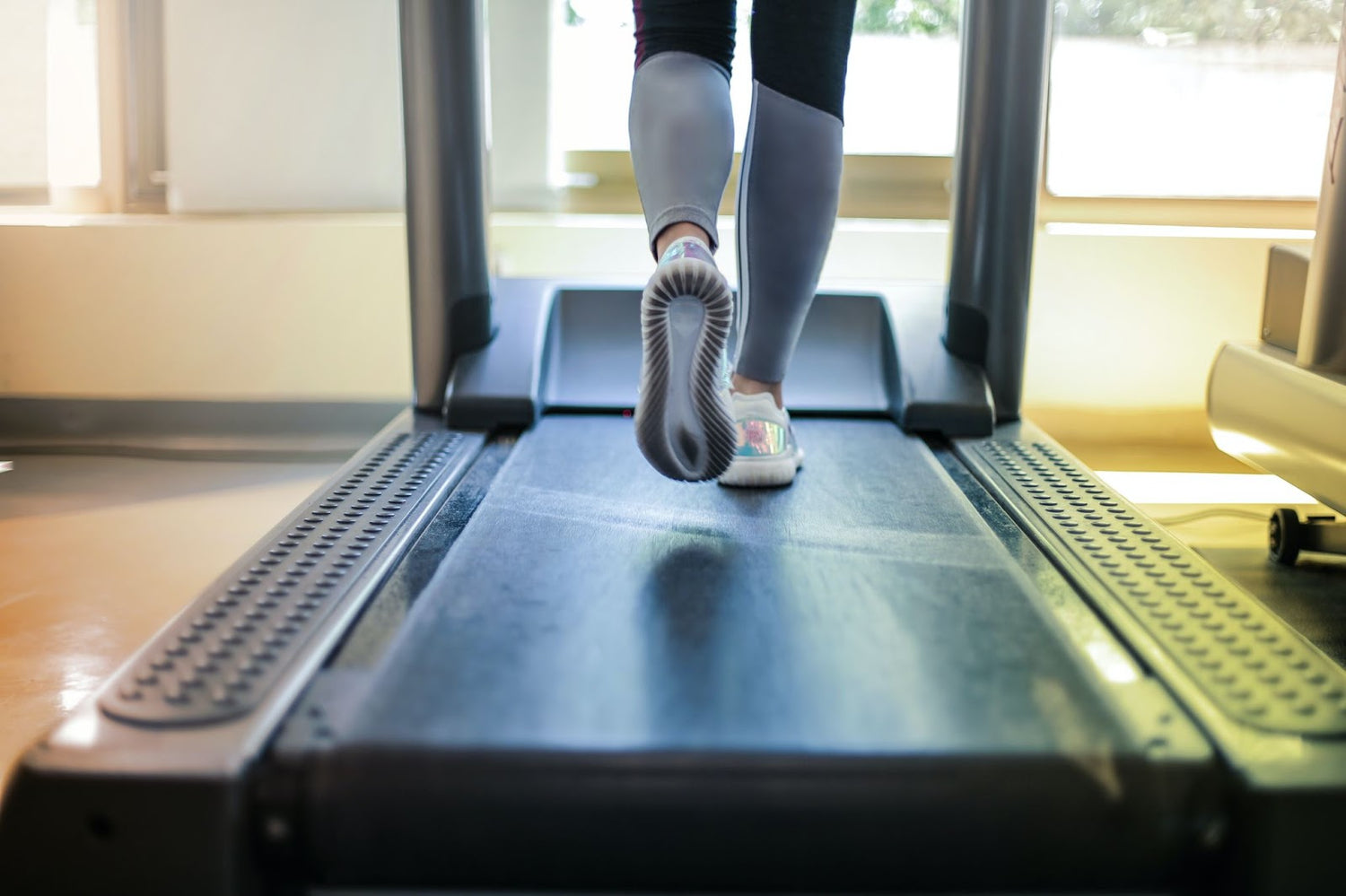Some days, we just want to stay at home instead of making the trek across town to the local gym. Or perhaps, crummy weather conditions have put a damper on our plans to go for a jog outside. But that doesn’t mean we can’t get in a good cardio workout!
In this post, we’ll tell you everything you need to know about endurance training at home so you’ll never miss a beat.
First Things First. What’s Endurance Exercise?
Simply put, endurance training is the act of exercising in a way that increases your body’s ability to withstand activity for long periods of time. In general, this type of popular exercise training refers to any type of physical activity that trains your aerobic energy system as opposed to your anaerobic energy system.
The Aerobic Energy System
The aerobic energy system is what allows you to sustain exercise for longer than two minutes. It produces far more ATP -- the primary molecule that you derive energy from -- than the other energy systems. However, your body can’t use the aerobic energy system to fuel high-intensity exercise because it can’t produce energy quickly enough.
The Anaerobic Energy System
To sustain high-intensity exercise -- the type that makes you lose control of your breathing -- you must elicit the help of your anaerobic energy systems to fuel the activity at hand. This will provide you with a faster source of ATP, but it comes with a major downside: you can’t rely on anaerobic energy systems for longer than about two minutes.
In other words, after you’ve sustained high-intensity activity for a couple of minutes, it’s likely you’ll hit a “wall” that prevents you from maintaining that high level of intensity without resting or decreasing the intensity of the activity.
For instance, think about how long you can sprint for. 15 to 30 seconds at max intensity and maybe a minute or so at about 80 percent intensity? After you've reached your limit for high-intensity exercise, you’ll spontaneously decrease your speed (intensity level) or just stop the activity altogether. Your muscles will feel tired and overwhelmed with lactic acid while you struggle to catch your breath.
On the flip side, think about what happens when you go for a brisk stroll around the block. Your breathing and heart rate may increase, and the activity might be a little more challenging at first, but once you find the right pace or get in a good stride, you’ll feel like you can stay at that intensity level for much longer than a measly one to two minutes.
Both Kinds Of Training Are Useful
In general, any activity that you are able to sustain for longer than roughly two minutes will train the aerobic energy system, which technically makes it a form of endurance training. In contrast, exercises that you can’t maintain at the same intensity for longer than two minutes will predominantly be training the anaerobic energy systems.
You can combine both of these types of training (endurance and anaerobic) into one great workout or keep them separate to get the benefits of both --but this article is all about endurance training, so we’ll circle back to anaerobic training another day. Let’s stay on track and take a quick peek at a few of the best benefits of endurance training.
Endurance Training Benefits
Healthier Body
Endurance training creates a stronger, healthier body. The cardiovascular system, muscles, joints, bones, and lungs all learn to adapt to the new task of sustaining a strong pace for hours.
Clearer Thinking
While ramping up too fast or overtraining can cause physical and mental fatigue, endurance training done properly has shown to actually help with cognitive function. It improves circulation throughout the body, and your brain greatly benefits from this.
Improved Metabolism
Many studies indicate that endurance training can boost the production of the hormone FGF21, which helps increase metabolic function.
Promotes A Youthful Appearance
Research shows that endurance training can actually slow the signs of aging. A study of long-distance cyclists over age 55 showed they had improved muscle mass and immunity as younger individuals.
Endurance Exercise You Can Do At Home
There is no need to stress your joints during a workout while trying to build endurance. GEAR 1 from HYGEAR (a smart resistance training system) offers incredible endurance workouts that’ll get your heart rate up and bring your muscles to fatigue while going nice and easy on your joints. What’s not to love?
Here is a great endurance workout you can do at home:
Gear 1 Circuit: Endurance Training
Squats and Rows
- Secure your Gear 1 to a sturdy anchor point at about mid-height.
- Face the anchor point and take a few steps back.
- Grasp the band handles with your arms extended.
- Bend your legs slightly and pull back both handles toward your waist while squatting.
- Hold for one to two seconds, squeeze your shoulder blades together, and slowly return to the start position in two seconds.
- Do 14 more reps (for 15 total) and immediately go to the next exercise.
Standing Press-Outs and Twists
- Again, use a mid-height anchor for your Gear 1.
- Turn your back to the anchor point, stand a few feet away from it, and grasp the handles at chest level.
- Assume an athletic stance and explosively press the handles away from your chest. Extend your arms and pause for one second.
- Rotate your torso to the right with the handles.
- Pause one second and rotate back to the center.
- Do 14 more reps (for 15 total) and immediately go to the next exercise.
Squats and Overhead Presses
- Switch your Gear 1 to a low anchor point.
- Stand with your back to the anchor and hold the handles at your shoulders.
- Assume the squat position and explosively press the handles over your head while straightening your legs.
- Pause for one second and return to the start position.
- Perform 14 more (for 15 total), rest 15 to 30 seconds, and hydrate.
Repeat all three exercises with very little to no rest, completing two more circuits.
A Final Word
An incremental, steady approach to building up your endurance training is the most effective way to reach your goals. Training both your muscular and cardiovascular endurance takes plenty of practice, and of course, a bit of time. But with a little bit of guidance, a positive attitude, and with HYGEAR in your corner -- you’ll reach your fitness goals in no time.
GEAR 1 from HYGEAR is a smart gym system designed for your home. It comes with two high-performance bands with smart sensors and adjusters, two ergonomic handles, wrist and ankle bands, a door anchor, a carrying bag, and a getting started guide -- everything you need to perform tons of endurance exercises from the comfort of your own home.
Whether your goal is to build stamina, burn fat, or get stronger -- HYGEAR can get you there.
Sources:
Physiology, Adenosine Triphosphate - StatPearls | NCBI Bookshelf
A lifetime of regular exercise slows down aging, study finds | Science Daily




Leave a comment
This site is protected by hCaptcha and the hCaptcha Privacy Policy and Terms of Service apply.